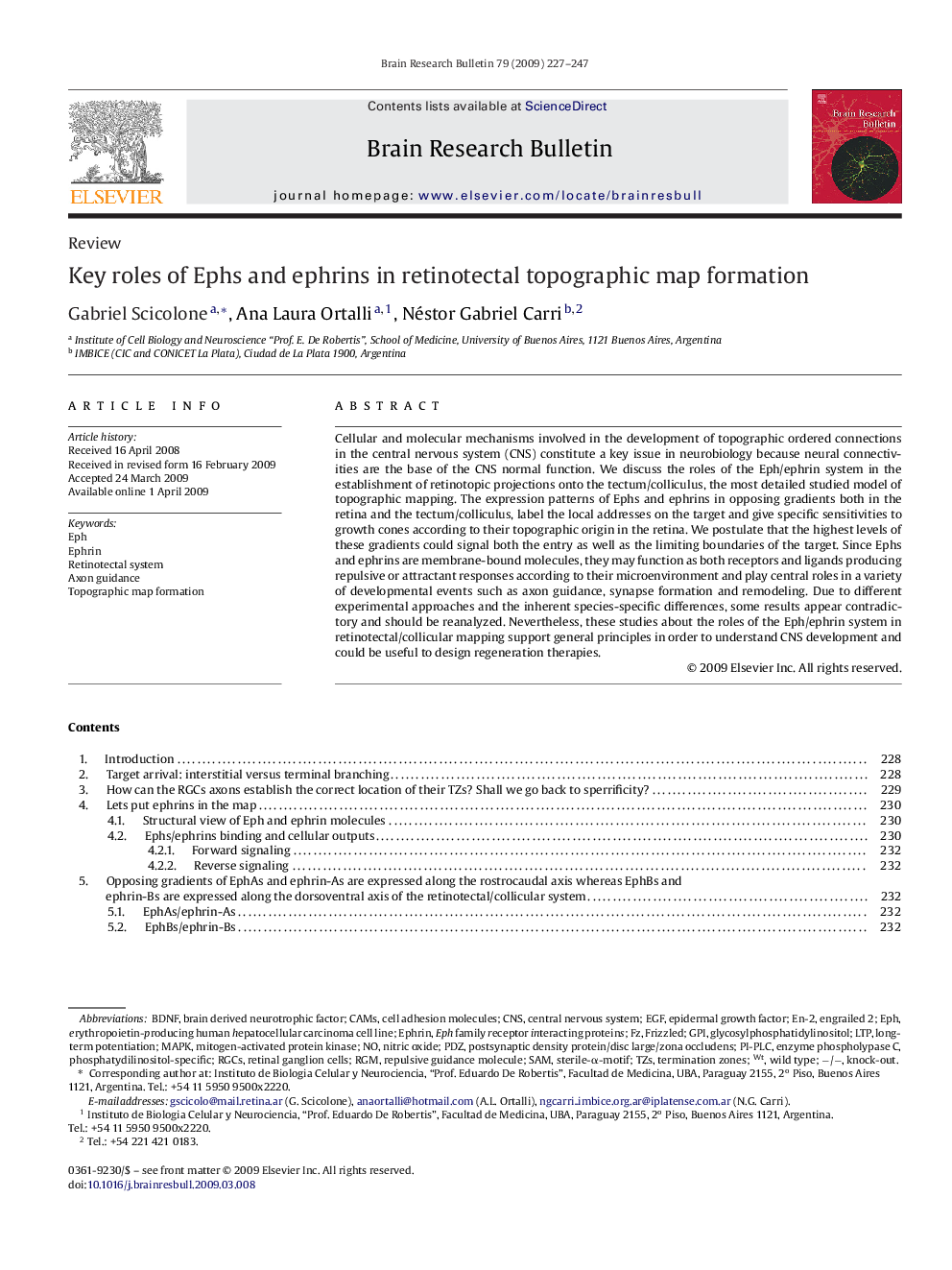| Article ID | Journal | Published Year | Pages | File Type |
|---|---|---|---|---|
| 4319616 | Brain Research Bulletin | 2009 | 21 Pages |
Cellular and molecular mechanisms involved in the development of topographic ordered connections in the central nervous system (CNS) constitute a key issue in neurobiology because neural connectivities are the base of the CNS normal function. We discuss the roles of the Eph/ephrin system in the establishment of retinotopic projections onto the tectum/colliculus, the most detailed studied model of topographic mapping. The expression patterns of Ephs and ephrins in opposing gradients both in the retina and the tectum/colliculus, label the local addresses on the target and give specific sensitivities to growth cones according to their topographic origin in the retina. We postulate that the highest levels of these gradients could signal both the entry as well as the limiting boundaries of the target. Since Ephs and ephrins are membrane-bound molecules, they may function as both receptors and ligands producing repulsive or attractant responses according to their microenvironment and play central roles in a variety of developmental events such as axon guidance, synapse formation and remodeling. Due to different experimental approaches and the inherent species-specific differences, some results appear contradictory and should be reanalyzed. Nevertheless, these studies about the roles of the Eph/ephrin system in retinotectal/collicular mapping support general principles in order to understand CNS development and could be useful to design regeneration therapies.
